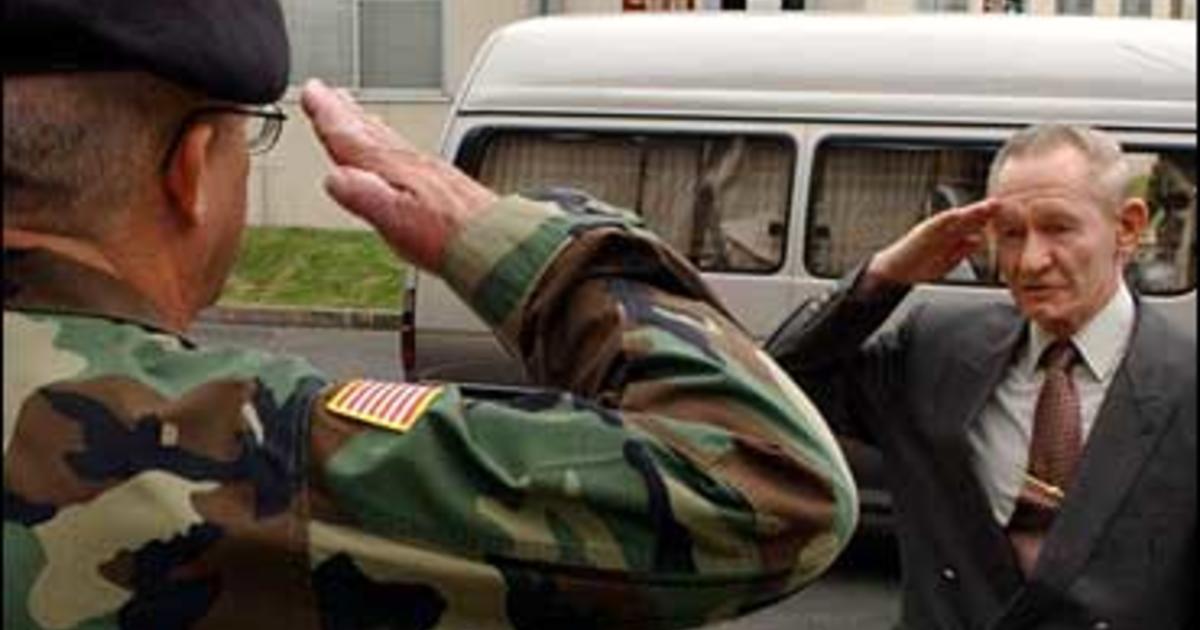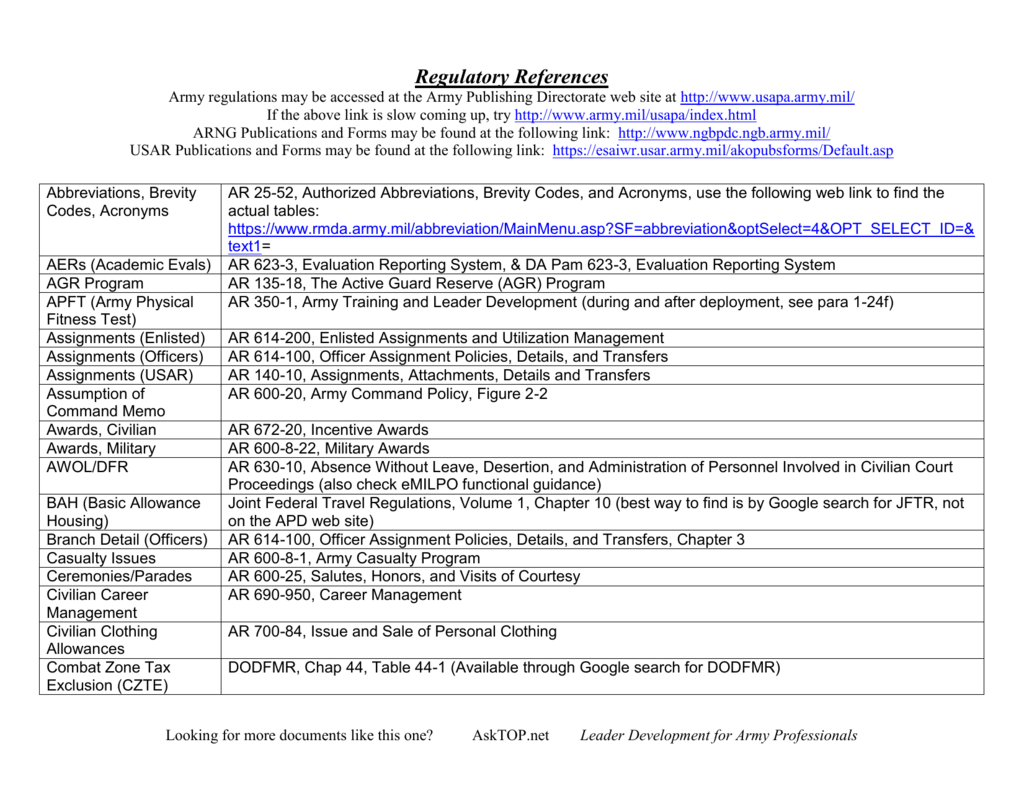Awol Regulation Army : What it is
Awol Regulation Army: What it is Are you curious about the concept of AWOL in the army? Do you want to understand the regulations associated with AWOL in the military? In this post, we aim to shed light on the AWOL Regulation in the Army and provide you with a comprehensive understanding of its significance and implications. So let's dive in! Subheading 1: Understanding AWOL in the Army AWOL, also known as Absent Without Leave, refers to the absence of a military personnel, without proper authorization, from their place of duty. This includes situations where soldiers fail to report to their assigned duties, fail to be present at a specified place of duty, or when a soldier is absent for more than 24 hours. It is important to note that AWOL is a serious offense, as it undermines the effectiveness and readiness of military units and can disrupt the overall mission. The Army has established specific regulations and procedures to address instances of AWOL and ensure the disciplined functioning of its personnel. Subheading 2: The Army AWOL Regulation The Army has implemented various regulations to govern the handling of AWOL cases. One of the primary regulations is Army Regulation 630-10, also known as the Absence Without Leave, Desertion, and Administration of Personnel Involved in Civilian Court Proceedings. This regulation outlines the duties and responsibilities of commanders and other personnel involved in the administration of AWOL cases. To ensure a fair and just process, the regulation emphasizes the significance of thorough investigations, providing individuals with due process rights, and offering appropriate punishments for AWOL cases. The regulation also highlights the need for documentation and reporting of AWOL incidents to maintain accurate records. Subheading 3: Consequences of AWOL The consequences of going AWOL in the Army can be severe. Soldiers who are found guilty of AWOL may face disciplinary action, which could range from non-judicial punishment, reduction in rank, extra duties, forfeiture of pay, or even a court-martial. Additionally, AWOL can have a detrimental impact on the soldier's military career, including limitations on future deployments, promotions, and benefits. FAQ section: Q1. How long can a soldier be AWOL before it becomes desertion? A: According to the Army Regulation 630-10, if a soldier is absent without leave for more than 30 days, it is considered desertion rather than AWOL. Q2. Can a soldier who has gone AWOL voluntarily turn themself in? A: Yes, a soldier who has gone AWOL has the option to voluntarily turn themself in. However, it is crucial to understand that voluntary return does not exempt the soldier from potential punishment. Q3. Can a soldier be dishonorably discharged for going AWOL? A: Yes, going AWOL can lead to a dishonorable discharge under certain circumstances. Each case is evaluated on an individual basis, taking into account the army's regulations and the seriousness of the offense. By delving into the AWOL Regulation in the Army, we hope to provide you with a clear understanding of the significance and impact of going AWOL. Remember, the army values discipline and adherence to regulations, and going AWOL goes against these principles. It is essential for every soldier to fulfill their duties responsibly and be accountable for their actions. This comprehensive guide has aimed to demystify the concept of AWOL, shed light on the Army AWOL Regulation, and discuss the consequences associated with it. Ensuring a disciplined military is vital for the safety and success of our armed forces. For more information and to stay updated on the latest regulations, it is encouraged to refer to official sources and consult with your chain of command. So, let us all strive to be responsible and accountable members of our Army, fulfilling our duties with integrity and dedication.  Image Source : www.mysanantonio.com
Image Source : www.mysanantonio.com  Image Source : www.cbsnews.com
Image Source : www.cbsnews.com  Image Source : www.amazon.com.br
Image Source : www.amazon.com.br /arc-anglerfish-arc2-prod-mco.s3.amazonaws.com/public/DHJW5UOVQREQLN6PLUAU5X4CTE.jpg) Image Source : www.armytimes.com
Image Source : www.armytimes.com  Image Source : armymilitary.net
Image Source : armymilitary.net  Image Source : armymilitary.net
Image Source : armymilitary.net  Image Source : armymilitary.net
Image Source : armymilitary.net  Image Source : www.rsteviemoore.com
Image Source : www.rsteviemoore.com
Afghan Troops Going AWOL From JBSA
 Image Source : www.mysanantonio.com
Image Source : www.mysanantonio.com awol afghan army troops jbsa soldiers going
39-Year AWOL Army Sgt. Surrenders - CBS News
 Image Source : www.cbsnews.com
Image Source : www.cbsnews.com awol army
Essential Guide To Military Desertion And AWOL: Overview, Review Of
 Image Source : www.amazon.com.br
Image Source : www.amazon.com.br desertion awol absence regulation instruction commanders dod unauthorized
AWOL Soldier And Two Veterans Reportedly Detained Trying To Enter South
/arc-anglerfish-arc2-prod-mco.s3.amazonaws.com/public/DHJW5UOVQREQLN6PLUAU5X4CTE.jpg) Image Source : www.armytimes.com
Image Source : www.armytimes.com awol sudan south soldier army
Awol Army Regulation - Army Military
 Image Source : armymilitary.net
Image Source : armymilitary.net Army Awol Regulation - Army Military
 Image Source : armymilitary.net
Image Source : armymilitary.net Army Awol Regulation - Army Military
 Image Source : armymilitary.net
Image Source : armymilitary.net R. Stevie Moore A.w.o.l.
awol gone military go soldiers christian decide ua someone did know stevie moore unfair notice please use
Awol sudan south soldier army. Army awol regulation. Awol soldier and two veterans reportedly detained trying to enter south. Awol army. R. stevie moore a.w.o.l.